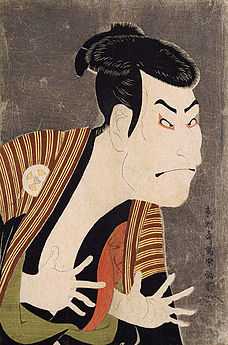Shini-e
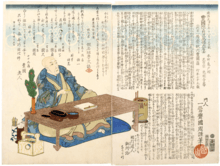
Shini-e of Kunisada by Kunichika, 1864
Shini-e (死絵, "Memorial prints"), also called "death pictures" or "death portraits", are Japanese woodblock prints,[1] particularly those done in the ukiyo-e style popular through the Edo period (1603-1867) and into the beginnings of the 20th century
When a kabuki actor died, memorial portraits shini-e were conventionally published with his farewell poem and posthumous name.[2]
Memorial portraits were created by ukiyo-e artists to honor a colleague or former teacher who had died.
Gallery
-
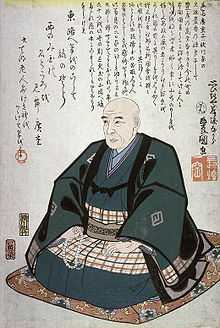
Hiroshige by Kunisada, 1858
-
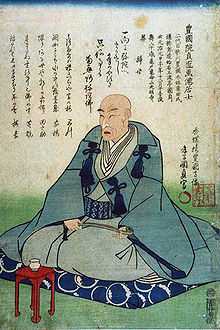
Kunisada by Toyohara Kunichika, 1864
-
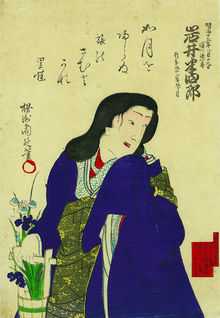
Iwai Hanshirō VIII, by Toyohara Chikanobu 1882
See also
Notes
- ↑ Takeuchi, Melinda. (2005). "Shini-e (Memorial Pictures)," in The Hotei Encyclopedia of Japanese Woodblock Prints, p. 594.
- ↑ Keyes, Roger et al. (1973). The Theatrical World of Osaka Prints, p. 320; Chin, Connie and Melinda Takeuchi. "Actors' Death Prints: Discovery of a New Genre." Horizons (Center for East Asian Studies, Stanford University) Fall 2005, p. 7.
References
- Keyes, Roger S. and Keiko Mizushima. (1973). The Theatrical World of Osaka Prints: a Collection of Eighteenth and Nineteenth Century Japanese woodblock Prints in the Philadelphia Museum of Art.Philadelphia: Philadelphia Museum of Art. OCLC 186356770
- Newland, Amy Reigle. (2005). The Hotei Encyclopedia of Japanese Woodblock Prints. Amsterdam : Hotei. 10-ISBN 9074822657/13-ISBN 9789074822657; OCLC 61666175
External links
- Viewing shini-e
- "Shini-e: the Performance of Death in Japanese Kabuki Actor Prints"
- Kuniyoshi project: Shini-e
| ||||||||||||||||||||
